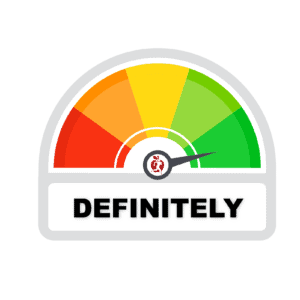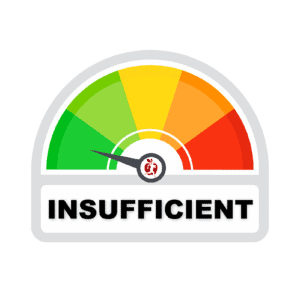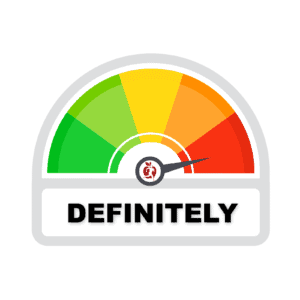
Tiana Hape-Cramond
(Associate Registered Nutritionist)
Note — The article was checked and updated October 2023.
Jump to:
- What is fat?
- Why is fat important to our health
- Types of Fats
- Unsaturated fats
- Monounsaturated fats (MUFA)
- Polyunsaturated Fats (PUFA)
- Health Benefits of unsaturated fats
- Health Risks of unsaturated fats
- Saturated Fats (SFA)
- Health Risks of saturated fats
- Trans fats (TFA)
- Health Risks of trans fats
- Countries banning Trans Fats
- How much fat do we consume?
- Related Questions
Western diet contains too many “bad” fats and not enough “good” fats, and this has been amplified over the years with processed and ultra-processed foods.
Monounsaturated fatty acids and polyunsaturated fatty acids are known as the “good” fats. They increase HDL cholesterol and decrease LDL cholesterol as well as having important functions for heart health, immune function and cell function.
Trans fats and saturated fatty acids are “bad” fats and raise LDL cholesterol which is detrimental for heart health. Artificial trans fats are harmful to the body and countries such as Denmark and the US have implemented a ban in order to limit their amounts.
For us to have a healthy and balanced diet, we need to include a certain amount of fats. However, we need to know what type of fat is good for us, which foods are the best sources, and which foods should be minimized or avoided.
What is fat?
Fat is an essential nutrient that is vital for many important functions of the body.
Types of fats include:
- monounsaturated fats
- polyunsaturated fats
- trans fats
- saturated fats

Fat supplies the body with omega-3 and omega-6 fatty acids which produce healthy cell membranes and maximize the absorption of fat-soluble vitamins and fat-soluble antioxidants.
Interesting to know is that fatty acids are important for creating the building blocks that fats are made from.
Why is fat important to our health
Eating fats is important for maintaining a healthy and balanced diet. Consuming fat is necessary for obtaining essential fatty acids which the body can not make on its own.
Fat has many functions in the body that are important to living a healthy lifestyle, such as:
- Creating energy
- Supporting cell function
- Supporting cell growth
- Supporting central nervous system
- Producing and regulating hormones
- Healing blood clots
- Controlling inflammatory response[1]
Eicosapentaenoic acid (EPA) and docosahexaenoic acid (DHA), which we talk about in more detail below, are omega-3 fatty acids which help maintain brain health and the health of our retinas.
What happens if we don't get enough fat
Dietary fat deficiency is rare in those who eat a balanced diet but some conditions can increase the risk of fat deficiency like eating disorders, inflammatory bowel disease and cystic fibrosis.
RELATED — Understanding Eating Disorders: History, Types and Statistics
When the body doesn’t receive fat that is needed, it can lead to a deficiency in fat soluble vitamins which can increase the risk of night blindness, infertility, swollen gums and more.
Skin inflammation can occur as fat is essential for the structure of skin cells and helps to maintain the moisture barrier. When there is not enough dietary fat it can lead to dermatitis and impact skin.
Restricting fat intake can weaken the immune system
Fragile immune system can lead to being more susceptible to illnesses. The body requires essential fatty acids to grow immune cells and dietary fat produces molecules that stimulate immune cell activity.[1]
Types of Fats
Different types of fats have different chemical structures and different physical properties. The differences in chemical composition also allows for different effects on cholesterol levels.
“Bad” fats tend to be solid at room temperature like butter, which is predominantly saturated fat, whereas “good” fats are more liquid at room temperature such as olive oil.[2]
The four main dietary fats in foods are:
- Unsaturated fatty acids
- Monounsaturated fatty acids
- Polyunsaturated fatty acids
- Saturated fatty acids
- Trans fatty acids
A diet high in saturated and trans fats raises LDL cholesterol levels which is known as bad cholesterol.
Eating an overall healthy diet high in monounsaturated fats and polyunsaturated fats can lower bad cholesterol and raise HDL which is good cholesterol.[2]
Unsaturated fats (Good fats)
Unsaturated fats have one or more double bonds between the carbon molecules. Unsaturated fats can be broken down into two groups – monounsaturated fats, which have one double bond, and polyunsaturated fats which contain two or more double bonds.
Monounsaturated fats (MUFA)
Monounsaturated fatty acid is a dietary fat that is known as one of the “good” fats. This is because of the effect it has on increasing HDL cholesterol which is the ‘good’ cholesterol.
Palmitoleic Acid
Palmitoleic acid, commonly known as omega-7 is a type of MUFA that can be found from plant sources such as nuts, seeds and vegetable oil. Omega-7 is not an essential fatty acid which means that the body can make it from other nutrients.
Palmitoleic acid has been researched for its health benefits and it has been found that omega-7 starts the process for fundamental energy-regulating systems that creates a metabolically youth milieu. This reaction results in an increased fat and sugar burning which means that there is less fat and sugar that are being stored in the body.[3]
Oleic Acid
Oleic acid is an omega-9 fatty acid that is prominent in olive oil.
This fatty acid’s main benefit is reducing coronary heart disease by 20 to 40% by LDL cholesterol reduction. As there is an increase in saturated fat within western diets, it is suggested to increase oleic acid intake.
This increase in oleic acid can limit the intake of saturated fat. An example of this is switching butter for olive oil where applicable.[4]
| Sources of Monounsaturated fat | Grams per 100g |
| Olive Oil | 65.4g |
| Canola oil | 60g |
| Hazelnuts | 53.3g |
| Peanut oil | 44.5g |
| Pecans | 42.2g |
| Almonds | 33.1g |
| Cashews | 31.1g |
| Sesame seeds | 23.5g |
| Avocado | 18.3g |
| Pumpkin seeds | 16.7g |
International organisations have recommended that intake of monounsaturated fatty acids should contribute roughly 12-25% of daily energy. The Ministry of Health recommends consuming 10-20% of energy in monounsaturated fatty acids.[5]
Polyunsaturated Fats (PUFA)
Polyunsaturated fatty acids are unsaturated fatty acids which have more than one unsaturated carbon molecule.
Omega-3
Omega-3 fatty acid has anti-inflammatory, antiarrhythmic and antithrombotic properties.
As a result of these properties, omega-3 has been shown to be effective in reducing the risk of sudden death caused by coronary heart disease.[6] Omega-3 is essential for the body cell function and includes:
- Eicosapentaenoic acid (EPA)
- Docosahexaenoic acid (DHA)
Docosahexaenoic acid
Docosahexaenoic acid, or DHA, is important for growth and development of body cells as well as brain cells. Consuming foods high in DHA can improve cell signalling and has shown to increase cognitive function.[7]
Eicosapentaenoic acid
Eicosapentaenoic acid, or EPA, is another essential fatty acid which is used for producing the signalling molecules, eicosanoids. These molecules are important for physiological processes and reduction in inflammation.
Omega-6
Omega-6 is responsible for immune health and gene regulation. Omega-6 includes:
- Linoleic acid
- Arachidonic acid
- Gamma linoleic acid
Linoleic Acid
Linoleic acid is an omega-6 that is vital for normal growth and development. This fatty acid is important as it is the precursor for arachidonic acid which is important for neurodevelopment and other physiological processes.[8]
Arachidonic Acid
Arachidonic acid is used for the prostaglandin system which aids the creation of eicosanoids. This fatty acid can be found in fish.[9]
Gamma Linoleic acid
Gamma linoleic acid is a fatty acid that is found in plants and seeds that can sometimes be used for medicinal purposes. The body converts gamma linoleic acid into other products which can decrease inflammation and cell growth.[10]
The New Zealand Ministry of Health recommends that 6 to 10% of energy comes from PUFAs. International recommendations for intake of polyunsaturated fats is up to 10% of total energy.
| Sources of Polyunsaturated fat | Grams per 100g |
| Flaxseed oil | 75.3g |
| Sunflower oil | 58.1g |
| Soybean oil | 54.1g |
| Walnuts | 50g |
| Corn oil | 49.3g |
| Flaxseed | 34.9g |
| Canola oil | 26.1g |
| Poppy seed | 21g |
| Tuna | 1.3g |
| Salmon | 0.93g |
As EPA and DHA have proven benefits to cardiovascular health, a separate intake of 610 mg for men and 430 mg for women is recommended, which is equivalent to 2 servings of oily fish a week.[5]
Health benefits of unsaturated fats
Unsaturated fats are very important for regular functioning of the body, and can also improve health by lowering insulin resistance, lowering the risk of cancer and have shown other benefits which we described in more detail below.

Lowering insulin resistance
A review was conducted that evaluated both animal and human studies on the effect of n-3 polyunsaturated fats and the prevention of insulin resistance. Although the results varied it was conclusive that n-PUFA has an effect on preventing and reversing insulin resistance.[11]
In middle aged men, those who consumed omega-3 had 43% greater insulin sensitivity compared to those who consumed a control diet.

Lowering risk of cancer
Omega-3 and monounsaturated fats may be linked to cause a reduced risk in developing breast cancer, prostate cancer and colorectal cancer.
It was estimated that switching from a Western diet to a Mediterranean diet could prevent 25% of new colorectal cancer cases, 15% of new cases of breast cancer and 10% of new prostate cancer cases.
RELATED — How common is Breast Cancer and what are the Risk Factors?
However, there is not enough evidence to draw a conclusive link and more research is needed in this area to make recommendations.[12]

Improved fetal development
There is evidence that supports an adequate intake of PUFAs are essential for growth, neurological development and cognitive function in the growing fetus.
The fetus receives all nutrients from the mother, therefore it is important that there is plenty of unsaturated fats for mother and the child.[12]

Decreasing premature births
Long chain omega-3 polyunsaturated fatty acids have been researched for their relationship to pregnancy.
It was found that low intakes of omega-3 have been associated with premature birth and low birth weight. This mechanism is thought to be due to the effect on the prostaglandins.[12]

Lowering the risk of cardiovascular diseases
Numerous studies have been conducted that investigate the effect of unsaturated fats and the risk of developing heart disease. The Nurses Health Study conducted in the UK found that a 5% increase in monounsaturated fatty acid consumption can reduce the risk of developing CVD by 17% in women.
Other studies into PUFA and CVD found an increase in omega-3 can lead to a decreased risk of death related to cardiovascular disease.[12]

Lowering the risk of stroke
A prospective study was used to identify that linoleic acid can decrease the risk of having an ischemic stroke by 66% in Japanese men.
Although there is strong evidence for a relationship between unsaturated fats and the decrease of heart disease, further studies are required to confirm the relationship between omega-3 and risk of having a stroke.[12]

Health risks of unsaturated fats
Most negative effects of unsaturated fats come from consuming diets low in monounsaturated fats and polyunsaturated fats.
Weight gain
When consuming large amounts energy-dense polyunsaturated fats can lead to increased weight and accompanying metabolic disorders. Therefore, when increasing the amount of polyunsaturated fats, it should be replacing saturated fat in order to maintain current calories.[13]

Carcinogenesis
An intervention study found that men consuming a high polyunsaturated fat diet had a higher fatal incidence of fatal carcinomas in comparison to the control group, who continued to consume their regular diet. This finding has not yet been confirmed by other studies.[14]

Immunosuppression
It has been theorised that high intake of omega-3 polyunsaturated fats could lead to a weakened defence mechanism against infections. However, there have been no conclusive findings yet.[13]

Saturated Fats (SFA)
Saturated fats are known as bad fats since they increase the level of LDL which is linked to an increased risk of cardiovascular events. Diets high in saturated fats are associated with illnesses such as
- Obesity
- Type II diabetes
- Increased blood pressure
Saturated fatty acids are commonly included in western diets from butter or fatty pieces of meat.
Highly processed foods are known to add refined carbohydrates, saturated fats and salt. These foods are common within the western diets in snacks, fizzy drinks and candy.
The recommendation for saturated fatty acid consumption from the Ministry of Health is less than 12% of total energy. International recommendations are less than 10% of total energy.
Sources of Saturated Fat | Grams per 100g |
Coconut oil | 90.9 |
Butter | 54.0 |
Palm Oil | 43.1 |
Bacon | 33.8 |
Cheese | 24.0 |
Chocolate | 17.67 |
Sausage | 8.8 |
Salami | 8.8 |
Ice-cream | 7.1 |
Pork Ribs | 6.8 |
Before we move to the health risks associated with high consumption of saturated fat, it is important to mention that saturated fatty acids, when consumed in moderation, less than 12% of total energy, can be beneficial.
Essential purposes for saturated fats in the body is to influence
- Cell signalling
- Secretion of hormones
- Metabolism
- Control inflammation
- Maintain cell structure
Saturated fats are beneficial for the brain
An investigation was conducted that found that eating saturated fats may reduce the risk of dementia by 37%.[15]
Also, a systematic review was conducted and found that high saturated fat intake was not associated with an increased risk of stroke and in studies it is suggested that saturated fats may have a protective effect.[16]
Health risks of saturated fats
Being aware of all the positives and negatives of saturated fats allows for people to have a better understanding of what they’re eating. Saturated fats have the title of a “bad” fat because of their association to health risks such as cardiovascular disease, cancer and mood.

Cardiovascular diseases (CVD)
The increased risk of cardiovascular disease is theorised to be due to the relationship between saturated fats and the increase in LDL cholesterol. However, more research is needed in this area to draw a conclusive relationship between cardiovascular disease and saturated fats because most research has drawn very weak connections to saturated fats and CVD.
An investigation using 1 tablespoon of butter a day found that there was an increased risk of developing cardiovascular disease by 1% but the results were not statistically significant.

Coronary heart disease (CHD)
The Nurses’ Health study found that consuming short chain saturated fats have no association with an increased risk of coronary heart disease. But, long chain saturated fats had a risk of 14% of developing coronary heart disease.[17]

Cancer
Animal fat, especially fat from red meats, are associated with an increased risk of prostate cancer. An increased consumption of fats including saturated fats, monounsaturated fat and alpha-linoleic acid was associated with an increased risk of developing prostate cancer.[18]
RELATED — Prostate Cancer: All you need to know and are afraid to ask

Bone Health
Diets high in saturated fat can decrease the membrane fluidity which reduces the calcium uptake in the membrane vesicles. This reduced calcium uptake affects bone health as the bones become more brittle.
RELATED — Calcium: For healthy bones, teeth and heart
Increased saturated fat can decrease bone density by 2.3%.[19]

Mood
A study in rats has been used to demonstrate the relationship between saturated fats and mood. It concluded that diets high in saturated fats can contribute to the development of depression-like behaviours.[20]
RELATED — Diet and the Brain: Fats

Less physical movement
A study was used to determine the relationship between dietary fat and physical activity. It found that when consuming a high palmitic diet, which is the most common saturated acid, had lower physical activity than those who consumed a diet high in oleic acid.
Those who consumed the diet high in oleic acid had a 12% increase in physical activity when compared to those who ate a western diet.[21]

Trans fats (TFA)
Trans fatty acids are unsaturated fatty acids that contain one or more double bonds. Trans fatty acids are created from partially hydrogenating vegetable oils. This means adding hydrogens, the addition of creates a more stable and solid fat.[22]
There are two types of trans fats:
- Natural trans fats
- Artificial trans fats
Natural trans fatty acids occur in meat and dairy and are naturally formed as a result of the bacteria in the animals stomach digesting grass. Naturally occurring trans fats are not harmful when ingested in moderation and can actually be beneficial to health.

Artificial trans fats are created for use in the food industry
The recommendation for trans fatty acids should contribute to less than 1% of total energy from both the Ministry of Health and World Health Organisation. This recommendation comes from the evidence that trans fats have an adverse effect on blood lipoprotein profiles and congenital heart disease.[5]
| Sources of Trans Fats | Grams per 100g |
| Butter | 2.05g |
| Cheddar Cheese | 1.05g |
| Steak and Cheese Pie | 0.37g |
| Vegetable Shortening | 0.28g |
| Frozen Pizza | 0.21g |
| Chocolate Biscuit | 0.18g |
| Milk | 0.11g |
| French Fries | 0.6g |
| Margarine | 0.6g |
| Fish Sticks | 0.4g |
Trans fats have been known to raise LDL cholesterol and lower HDL cholesterol which is why it is known as a “bad” fat. Therefore, because of its effects on cholesterol, it increases the risk for heart disease and other negative health outcomes.
Health risks of trans fats
Trans fats are known as “bad” fats. This title is given to because of the associated health risks like cardiovascular disease, cancer, diabetes and more.

Cardiovascular diseases (CVD)
When consuming a diet with a high amount of trans fats, there is a 27% risk of developing cardiovascular disease. This is due to the effect of trans fats on serum lipid levels.[22]

Coronary heart disease (CHD)
Over the last decade there has been lots of research into the relationship between trans fatty acid and coronary heart disease.
This research has emerged with the conclusion that increased industrial trans fatty acids can increase LDL and decrease HDL which may increase the risk of developing CHD by 23%. [25]

Inflammation
Observational studies have been used to investigate the relationship between trans fats and inflammation. These studies found that an increased intake of trans fats was linked to an increase in inflammation markers.
A six year study on monkeys demonstrated that when fed a high trans fat diet the monkeys gained 7.2% of their body weight.[23]

Cholesterol
The effect of trans fatty acids and cholesterol have been well researched and it is clear that there is a conclusive relationship between high trans fatty acid intake and LDL cholesterol.
Trans fats can increase LDL cholesterol by 0.04mmol/L when 1% of carbohydrate is replaced by trans fats.[26]

Insulin resistance
When tested on rats, an investigation found that giving rats 3% of their energy from trans fatty acid did lead to increased insulin resistance which can lead to the development of diabetes.
RELATED — Diabetes: Early Signs, Causes, Types and Treatment
This increased insulin resistance did not reduce when adding linoleic acid, which means that a decrease of trans fatty acid is required.[22]

Alzheimer's disease
Using an elderly population, researchers investigated the relationship between trans fats and Alzheimer’s. They found that those who consumed a diet high in trans fats had a four times greater chance of developing Alzheimer’s.[27]

Cancer
Trans fats have been hypothesised to be related to cancers. The relationship between colorectal cancer and trans fats have found a 50% increased risk of colorectal cancer in women who consumed high levels of trans fats.
It has been hypothesised to increase the risk of cancer through alteration of immune responses, cell wall integrity and prostaglandin synthesis.[22]

Diabetes
The Nurses’ Health Study found that the development of Type II diabetes is associated with trans fatty acids.
Reducing trans fatty acid to 1% of energy could reduce the incidence of Type II diabetes by 40%.[22]

Infertility in women
Consuming a large amount of trans unsaturated fatty acids has been shown to increase the risk by 79% of ovulatory infertility in women when consuming more than 2% of energy from trans fats.[28]

Major depressive disorders
Fast food and depression have been theorised to be connected. Research found that foods high in trans fats, like fast food, can increase the risk of depression for up to 48%.[29]
RELATED — Introduction to: Depression

Irritability and aggression
An observational study in 2012 was the first to draw evidence that links dTFA and behavioural irritability and aggression.
This study also suggested that dietary trans fatty acid consumption can serve as a marker for untoward behaviours and practices.[30]

Impaired memory
Along with the increased risk of Alzheimer’s, an increased intake of trans fatty acid can result in decrease in memory function.
This was investigated in young adults and found that those with a high trans fatty acid intake had 0.76 fewer word recall than at baseline.[31]

Acne
High intake of trans fatty acids is associated with inflammation, which is present in acne. This theory was tested in young adults using a “western” diet (high in refined carbohydrates and fats) and a non-western diet.
This found that the “western” diet did increase acne.[32]

Why are some countries banning trans fats
In 2003, Denmark led the world as they became the first country to introduce a law that regulated their food industry to limit the amount of trans fats.[33]
This ban came into fruition after a Lancet article which stated the harmful effects of trans fats on coronary heart disease. Due to this ban of trans fats in Denmark, there has been estimated 30 fewer deaths per 100,000 and suggests that this implication may lower their obesity rates.[34]
This ban affected the European countries that shared food imports and exports, and this started a debate around the harmful effects of trans fats.[33]
Australia and New Zealand do not have a ban on trans fats
Food Standard Australia and New Zealand, stated that if consumption of trans fats is below the World Health Organization’s recommendation of less than 1g then there is no required legislation to ban it.[35]
In 2015, the Food and Drug Administration ruled that artificial trans fats were not suitable for consumption and as of 2018 artificial trans fats were banned in the US.
This ban on artificial trans fats is thought to decrease the incidence of diabetes, dementia and other metabolic diseases.[36]
How much fat do we consume?
With continuous changes to diets the fat consumption can fluctuate. From the adult nutrition survey, it was found that typically New Zealanders’ 13.1% energy comes from saturated fat which is above the Ministry of Health recommendation.
Monounsaturated fat had a contribution of 12.3% to the total energy and polyunsaturated fat provided 4.8% of total energy. Polyunsaturated fat consumption in New Zealand was lower than the recommendation from the Ministry of Health.[37]
Using a 2010 report, this identified that the countries that consume the most saturated fat are:
- Samoa ~27% total energy
- Kiribati ~25% total energy
- Sri Lanka ~22% total energy
- Romania ~21% total energy
- Malaysia ~20% total energy
In 75 of 187 countries, representing 2.73 billion adults and 61.8% of the global adult population, mean consumption of fat contributed to less than 10% of daily energy.[38]
Related Questions
1. What are interesterified fats?
Interesterification is swapping or rearranging fatty acids which allows for the creation of different triglycerides molecular species and can be used to create fats with a specific positional composition or physical properties.
Commercial interesterification is used in the food industry for spreads, bakery and confectionery products to reduce the saturated fatty acid content.[39]
2. What is the difference between fats and fatty acids?
Fat is a group that includes fatty acids.
The difference between fats and fatty acids is that fatty acids are monomers which means that they are small molecules whereas fats are made of the combination of glycerol and fatty acids.[40]
3. What is the difference between fats and lipids?
Lipids are a broader group of biomolecules that include fats. Lipids include both liquid and solid forms whereas fats are mainly solids.
Lipids are either simple or complex and categorised into steroids triglycerides and phospholipids and fats are split between two groups which are saturated and unsaturated fats.[41]
4. What is the difference between fats and oils?
Fats and oils are both made of triglycerides and the amount of shorter chains of fatty acids or unsaturated fatty acids, which reduces the melting point for fat and oils.
A difference between fats and oils is that fats are mainly found from animal products but can be made from vegetable oil through hydrogenation. Oils are mainly from plants or fish.[42]
5. What diet promotes good fats?
The Mediterranean diet is high in fruits, vegetables. legumes, nuts, beans, cereals and grains, fish and unsaturated fats.
This diet generally has a low intake of meat and dairy products which reduces saturated fat intake. As this diet is high in unsaturated fats such as olive oil it has been linked to good health.[43]
In case you would like to go in more depth about possible health issues concerning unhealthy fats, then you should check our new article specifically focusing on Heath Risks: Trans and Saturated Fats.
Also, if you would like to read more about similar topics and have good guidance around them, I would suggest that you join our healthy community and Subscribe to our Newsletter. That way, you will always be informed when a new article, regarding the topics that you are interested in, will be published.
Tiana is an Associate Registered Nutritionist who has a passion for public health and education. Working towards a Master’s in Nutrition Practice with a Bachelor’s in Human Nutrition, Tiana has a personal interest in healthy heart nutrition and promoting positive lifestyle behaviours.
References
(1) Goodwin, M. 5 Signs You’re Not Getting Enough Fat in Your Diet [Internet]. Healthline. Healthline Media; 2020 [cited 2021 Dec 12]. Retrieved from https://www.healthline.com/health/fat-deficiency#role-of-fat
(2) Dietary Fats [Internet]. www.heart.org. 2021 [cited 2021 Dec 12]. Retrieved from https://www.heart.org/en/healthy-living/healthy-eating/eat-smart/fats/dietary-fats
(3) Johannah Sakimura, RD. Omega-7: The New “Healthy Fat”? – Heart Health Center – Everyday Health [Internet]. EverydayHealth.com. 2013 [cited 2021 Dec 14]. Retrieved from https://www.everydayhealth.com/heart-health/omega-7-the-new-healthy-fat.aspx
(4) Lopez-Huertas E. Health effects of oleic acid and long chain omega-3 fatty acids (EPA and DHA) enriched milks. A review of intervention studies. Pharmacological research. 2010 Mar 1;61(3):200-7.
(5) Ministry of Health, 2003. Food and Nutrition Guidelines for Healthy Adults: A background paper. Wellington. Ministry of Health. Retrieved from https://www.nzihf.co.nz/media-resources-1/articles/personal%20training-nutrition-guidelines-adults
(6) Covington M. Omega-3 fatty acids. American family physician. 2004 Jul 1;70(1):133-40. Retrieved from https://www.aafp.org/afp/2004/0701/p133.html
(7) Horrocks LA, Yeo YK. Health benefits of docosahexaenoic acid (DHA). Pharmacological research. 1999 Sep 1;40(3):211-25. Retrieved from https://www.nutritional-supplement-truths.com/support-files/dha.pdf
(8) Taha AY. Linoleic acid–good or bad for the brain? NPJ science of food. 2020 Jan 2;4(1):1-6. Retrieved from https://www.nature.com/articles/s41538-019-0061-9
(9) KCBD. Arachidonic Acid: The Good and Bad [Internet]. https://www.kcbd.com. KCBD; 2003 [cited 2021 Nov 8]. Retrieved from https://www.kcbd.com/story/1467213/arachidonic-acid-the-good-and-bad/
(10) Gamma-Linoleic Acid (GLA): Overview, Uses, Side Effects, Precautions, Interactions, Dosing and Reviews [Internet]. Webmd.com. 2019 [cited 2021 Nov 8]. Retrieved from https://www.webmd.com/vitamins/ai/ingredientmono-805/gamma-linolenic-acid-gla
(11) Fedor D, Kelley DS. Prevention of insulin resistance by n-3 polyunsaturated fatty acids. Current Opinion in Clinical Nutrition & Metabolic Care. 2009 Mar 1;12(2):138-46. Retrieved from https://www.mdpi.com/2218-1989/11/11/742/pdf
(12) Lunn J, Theobald HE. The health effects of dietary unsaturated fatty acids. Nutrition Bulletin. 2006 Sep;31(3):178-224. Retrieved from https://onlinelibrary.wiley.com/doi/full/10.1111/j.1467-3010.2006.00571.x
(13) Eritsland J. Safety considerations of polyunsaturated fatty acids. The American journal of clinical nutrition. 2000 Jan 1;71(1):197S-201S.
(14) Pearce ML, Dayton S. Incidence of cancer in men on a diet high in polyunsaturated fat. The Lancet. 1971 Mar 6;297(7697):464-7.
(15) Roberts RO, Roberts LA, Geda YE, Cha RH, Pankratz VS, O’Connor HM, Knopman DS, Petersen RC. Relative intake of macronutrients impacts risk of mild cognitive impairment or dementia. Journal of Alzheimer’s disease. 2012 Jan 1;32(2):329-39. Retrieved from https://www.ncbi.nlm.nih.gov/pmc/articles/PMC3494735/
(16) Micha R, Mozaffarian D. Saturated fat and cardiometabolic risk factors, coronary heart disease, stroke, and diabetes: a fresh look at the evidence. Lipids. 2010 Oct;45(10):893-905. Retrieved from https://journals.sagepub.com/doi/full/10.1177/1753944717742549
(17) Hu FB, Stampfer MJ, Manson JE, Ascherio A, Colditz GA, Speizer FE, Hennekens CH, Willett WC. Dietary saturated fats and their food sources in relation to the risk of coronary heart disease in women. The American journal of clinical nutrition. 1999 Dec 1;70(6):1001-8.
(18) Willett WC, Stampfer MJ, Colditz GA, Rosner BA, Hennekens CH, Speizer FE. Dietary fat and the risk of breast cancer. New England Journal of Medicine. 1987 Jan 1;316(1):22-8.
(19) Corwin RL, Hartman TJ, Maczuga SA, Graubard BI. Dietary saturated fat intake is inversely associated with bone density in humans: analysis of NHANES III. The Journal of nutrition. 2006 Jan 1;136(1):159-65.
(20) Jørgensen BP, Hansen JT, Krych L, Larsen C, Klein AB, Nielsen DS, Josefsen K, Hansen AK, Sørensen DB. A possible link between food and mood: dietary impact on gut microbiota and behavior in BALB/c mice. PloS one. 2014 Aug 18;9(8):e103398. Retrieved from https://journals.plos.org/plosone/article?id=10.1371/journal.pone.0103398
(21) Kien CL, Bunn JY, Tompkins CL, Dumas JA, Crain KI, Ebenstein DB, Koves TR, Muoio DM. Substituting dietary monounsaturated fat for saturated fat is associated with increased daily physical activity and resting energy expenditure and with changes in mood. The American journal of clinical nutrition. 2013 Apr 1;97(4):689-97. Retrieved from https://www.researchgate.net/publication/235750325_Substituting_dietary_monounsaturated_fat_for_saturated_fat_is_associated_with_increased_daily_physical_activity_and_resting_energy_expenditure_and_with_changes_in_mood
(22) Dhaka V, Gulia N, Ahlawat KS, Khatkar BS. Trans fats—sources, health risks and alternative approach-A review. Journal of food science and technology. 2011 Oct;48(5):534-41. Retrieved from https://www.ncbi.nlm.nih.gov/pmc/articles/PMC3551118/
(23) Leech J. What Are Trans Fats, and Are They Bad for You? [Internet]. Healthline. Healthline Media; 2019 [cited 2022 Jan 7]. Retrieved from https://www.healthline.com/nutrition/why-trans-fats-are-bad#basics
(24) Trans Fats [Internet]. www.heart.org. 2021 [cited 2021 Dec 19]. Retrieved from https://www.heart.org/en/healthy-living/healthy-eating/eat-smart/fats/trans-fat
(25) Kris-Etherton PM. Trans-fats and coronary heart disease. Critical reviews in food science and nutrition. 2010 Nov 29;50(S1):29-30. Retrieved from https://www.ncbi.nlm.nih.gov/pmc/articles/PMC3024842/
(26) Remig V, Franklin B, Margolis S, Kostas G, Nece T, Street JC. Trans fats in America: a review of their use, consumption, health implications, and regulation. Journal of the American Dietetic Association. 2010 Apr 1;110(4):585-92. Retrieved from https://krex.k-state.edu/dspace/bitstream/handle/2097/6377/RemigJADA2010.pdf;jsessionid=A7056C195964EBAA13343F59F69F6C05?sequence=1
(27) Niu SL, Mitchell DC, Litman BJ. Trans fatty acid derived phospholipids show increased membrane cholesterol and reduced receptor activation as compared to their cis analogs. Biochemistry. 2005 Mar 22;44(11):4458-65. Retrieved from https://www.ncbi.nlm.nih.gov/pmc/articles/PMC1779501/
(28) Chavarro JE, Rich-Edwards JW, Rosner BA, Willett WC. Dietary fatty acid intakes and the risk of ovulatory infertility. The American journal of clinical nutrition. 2007 Jan 1;85(1):231-7. Retrieved from https://watermark.silverchair.com/znu00107000231.pdf?token=AQECAHi208BE49Ooan9kkhW_Ercy7Dm3ZL_9Cf3qfKAc485ysgAAAsswggLHBgkqhkiG9w0BBwagggK4MIICtAIBADCCAq0GCSqGSIb3DQEHATAeBglghkgBZQMEAS4wEQQM8d8Ciq7Gw1tVXzVSAgEQgIICfrRdgNJC5FttaYJFHvnH5Nuf-ChOUWf6fjFc6dUG69kb6VbaoJi_rEEhBpmzvD6xSoWTEgwDGNyCmTJ1XwXX4MO84bVscUEBNj5vG8CXraj0VWu9lHRWzme2Ir0HiyiBTxVuZ7DlQlTtDVupFm86CKBvztk2mqNNX4fZwMZthYN15rbRpe13E0dJgA80QQDDZai07vk10_PeSxLSsG4yaAY61ItAH7MjU5EKhqhW7i4zMUjapvcfeSWOVqem_DKIbl3am4ICQlXBeIUtjf7LeJd3oi-xeg2mTacF9fZ1cZLAeb9os90NJmCRSsQDaEFFkyZs4yCfiiodOgsuWKhcDUEbtVnY-N8BcQjZs5LXk9z_t1WBDVGRKSvseGZ8yOrPq0zVfcYH0h1IGoYfO9vpYm8Dc6x5c4xpY-3Mv594k-n3aHla_wKfUGjFmq-uI2tO2t6d_6EnQd5bJzZG50XTOrz3MnkO9nqw5kSH9D1Y0QSG83OyU-JMYi_nn4zphnECA4amvteWNcPvPBDgrYoOsd5zq0leAGEFEXw38k0_9imcxRCp6fUEOASfXw2zfr5epIbC_iTHiacNdR1JaAUlIXIK6bBcFEM9sRF2UOWTRzipW5RRj5116Da3mYuYzm8mRcElCbgND3Ir5KYZaofhPW-JxqDjWynxvVd4lqJzqIkH73wGGh7Sw2Ye-wEBxCz_8mQl2X_SrxrkxXqvVVV9ZA5aVgkK-jWmUynfPGXhISh7optmKetZ_-tQkr0dj5hCRRkBp46aBN-oMfVzuAFRgp_3oP9FhrEVPkLoCWIrjuqEhAA22v1pEDQAvHEBtmR20LXcYh43svsbGUK07Kdj
(29) Popa TA, Ladea M. Nutrition and depression at the forefront of progress. Journal of medicine and life. 2012 Dec 15;5(4):414. Retrieved from https://www.ncbi.nlm.nih.gov/pmc/articles/PMC3539842/
(30) Golomb BA, Evans MA, White HL, Dimsdale JE. Trans fat consumption and aggression. PloS one. 2012 Mar 5;7(3):e32175.
(31) Golomb BA, Bui AK. A fat to forget: Trans fat consumption and memory. Plos one. 2015 Jun 17;10(6):e0128129. Retrieved from https://www.ncbi.nlm.nih.gov/pmc/articles/PMC4470692/
(32) Schilling R. Diet Can Influence Acne.
(33) WHO. Denmark, trans fat ban pioneer: lessons for other countries [Internet]. Who.int. World Health Organization: WHO; 2018 [cited 2022 Jan 7]. Retrieved from https://www.who.int/news-room/feature-stories/detail/denmark-trans-fat-ban-pioneer-lessons-for-other-countries
(34) Spruk R, Kovac M. Does a ban on trans fats improve public health: synthetic control evidence from Denmark. Swiss Journal of Economics and Statistics. 2020 Dec;156(1):1-32. Retrieved from https://sjes.springeropen.com/articles/10.1186/s41937-019-0048-0
(35) Crowie, T. NZ won’t follow US on trans fat ban [Internet]. RNZ. RNZ; 2015 [cited 2022 Jan 7]. Retrieved from https://www.rnz.co.nz/news/national/276552/nz-won’t-follow-us-on-trans-fat-ban
(36) Artificial trans fats banned in U.S. [Internet]. News. 2018 [cited 2022 Jan 7]. Retrieved from https://www.hsph.harvard.edu/news/hsph-in-the-news/us-bans-artificial-trans-fats/#:~:text=It’s%20official%3A%20Artificial%20trans%20fats,deadline%20of%20June%2018%2C%202018.
(37) University of Otago and Ministry of Health. 2011. A Focus on Nutrition: Key findings of the 2008/09 New Zealand Adult Nutrition Survey. Wellington: Ministry of Health. Retrieved from https://www.health.govt.nz/system/files/documents/publications/a-focus-on-nutrition-v2.pdf
(38) Micha R, Khatibzadeh S, Shi P, Fahimi S, Lim S, Andrews KG, Engell RE, Powles J, Ezzati M, Mozaffarian D. Global, regional, and national consumption levels of dietary fats and oils in 1990 and 2010: a systematic analysis including 266 country-specific nutrition surveys. Bmj. 2014 Apr 15;348.
(39) Mills CE, Hall WL, Berry SE. What are interesterified fats and should we be worried about them in our diet? Retrieved from https://www.ncbi.nlm.nih.gov/pmc/articles/PMC5497165/
(40) National Research Council. Diet and health: implications for reducing chronic disease risk. National Academies Press; 1989.
(41) Vedantu. Difference Between Lipids and Fats [Internet]. VEDANTU. Vedantu; 2020 [cited 2021 Dec 12]. Retrieved from https://www.vedantu.com/biology/difference-between-lipids-and-fats
(42) Difference Between Fats and Oils – Detailed Comparison with Examples [Internet]. BYJUS. BYJU’S; 2018 [cited 2021 Dec 12]. Retrieved from https://byjus.com/chemistry/difference-between-fats-and-oils/
(43) NHS Choices. What is a Mediterranean diet? – Eat well [Internet]. 2021 [cited 2021 Dec 12]. Retrieved from https://www.nhs.uk/live-well/eat-well/what-is-a-mediterranean-diet/






